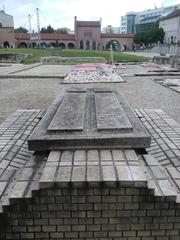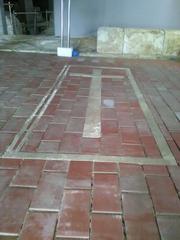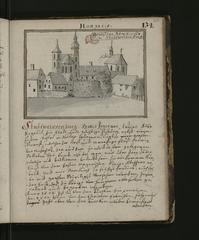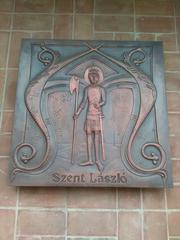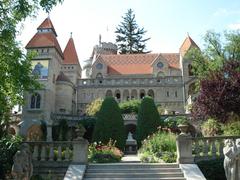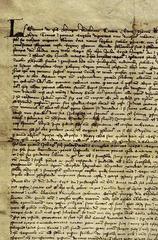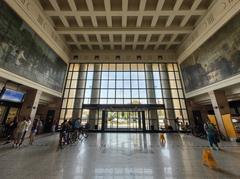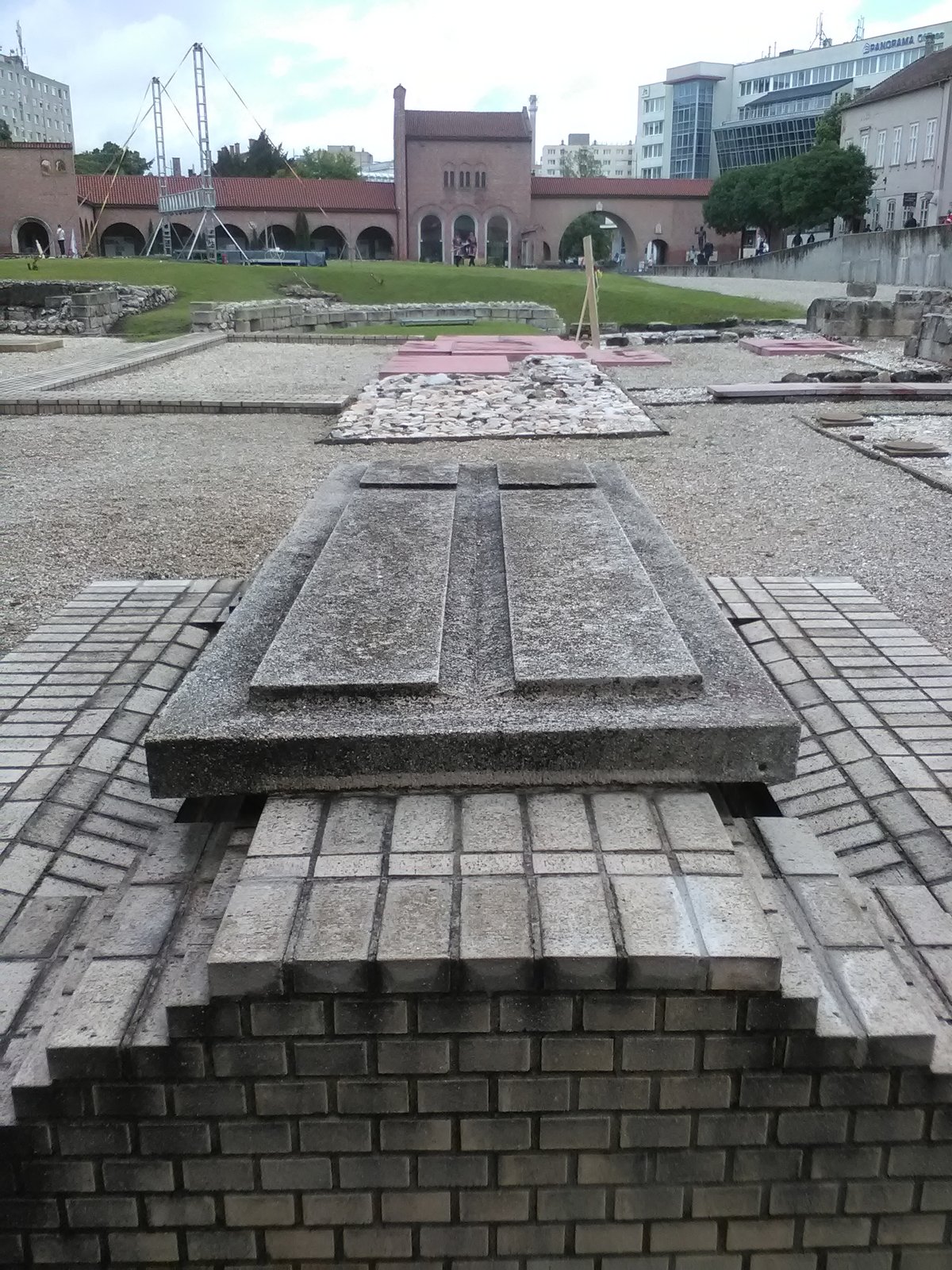
Székesfehérvár Basilica: Visiting Hours, Tickets, and Guide to Hungary’s Historic Cathedral
Date: 14/06/2025
Introduction
Székesfehérvár Basilica, also known as the Basilica of the Assumption of the Blessed Virgin Mary, is one of Hungary’s most significant historical and religious landmarks. Established in the early 11th century by King Stephen I, it served as the coronation church and royal burial place for Hungarian monarchs, embodying the nation’s medieval heritage and royal tradition. Although destroyed during the Ottoman occupation, the site’s ruins and its 18th-century successor cathedral continue to draw visitors seeking to experience the heart of Hungarian history, spirituality, and culture (Székesfehérvár Basilica: A Historic Hungarian Landmark; Székesfehérvár Basilica: Visiting Hours, Tickets, and Its Role in Hungarian History).
This detailed guide provides essential information for visitors, including historical context, architectural highlights, practical visiting details, and suggestions for nearby attractions. Whether you are a history enthusiast, a pilgrim, or a cultural explorer, Székesfehérvár Basilica offers a memorable journey into Hungary’s royal and spiritual past.
Table of Contents
- Overview and Historical Significance
- Architectural Evolution
- National and Cultural Importance
- Visiting Information
- Nearby Attractions
- Frequently Asked Questions (FAQ)
- Conclusion and Recommendations
- Sources and Official Links
Overview and Historical Significance
Origins and Foundation
Founded by King Stephen I around 1010, the original Székesfehérvár Basilica was designed as a palatine church and dynastic mausoleum, inspired by Charlemagne’s Palatine Chapel in Aachen. Its vast size and grandeur rivaled the great cathedrals of Western Europe, symbolizing both the spiritual and political emergence of the Hungarian kingdom (Székesfehérvár Basilica: A Historic Hungarian Landmark).
Architectural Evolution
- Romanesque Beginnings: The original church featured a three-nave Romanesque layout and robust towers, reflecting early medieval architecture.
- Gothic Transformations: Over centuries, kings such as Charles I and Matthias Corvinus expanded and modified the basilica, adding Gothic vaults, the Matthias Chapel, and the prominent Pipó Tower, which became a defining feature of the building.
- Destruction and Ruins: The basilica suffered irreparable damage during the Ottoman occupation in the 16th century. Following an explosion in 1601, it was never rebuilt. Its remnants now form the Medieval Ruin Garden (Középkori Romkert), preserved as a national memorial (Székesfehérvár Basilica Visiting Hours, Tickets & Guide).
National and Cultural Importance
- Coronation and Burial Site: For over five centuries, the basilica was the ceremonial heart of the Hungarian kingdom. Thirty-seven kings and thirty-nine queens consort were crowned here, and at least fifteen monarchs, including St. Stephen himself, were buried within its walls.
- Center of Power: The basilica also housed the crown jewels and national archives, underscoring its status as both a spiritual and political hub.
- Pilgrimage and Festivals: The site remains a destination for religious pilgrimages, particularly during St. Stephen’s feast and the annual Royal Days Festival, which features historical reenactments and cultural events celebrating Hungary’s royal legacy (Hungarian Conservative).
Visiting Information
Location and Access
Székesfehérvár Basilica is located in Székesfehérvár’s historic center, approximately 60–65 km southwest of Budapest. The city is accessible by regular train and bus services from Budapest, with travel times of about 45–60 minutes. The basilica and the Medieval Ruin Garden are within walking distance from the main train and bus stations (Practical Visitor Information for Székesfehérvár Basilica).
Opening Hours
- Medieval Ruin Garden (Középkori Romkert):
- April – October: 9:00 AM – 6:00 PM
- November – March: 9:00 AM – 4:00 PM
- Closed on major Hungarian public holidays
- Cathedral Basilica of St. Stephen the King (successor church):
- Typically open daily from 9:00 AM – 5:00 PM, with reduced hours on Sundays and during services
- Confirm current hours online, especially during restoration works or special events (liveitupwithlacey.com)
Tickets and Tours
- Admission:
- Medieval Ruin Garden: Adults 1,000 HUF (~3 EUR), Students/Seniors 500 HUF (~1.5 EUR), Children under 6 free
- Cathedral Basilica: General admission is usually free; donations are welcome
- Special exhibitions, crypt, or bell tower tours may require a small extra fee (typically under 2,000 HUF)
- Purchase: Tickets can be bought on site or online via the official tourism website
- Guided Tours: Offered daily in Hungarian and English, providing in-depth historical insights. Advance booking is recommended, especially for English tours or group visits.
Accessibility
- The basilica and Medieval Ruin Garden feature paved paths and ramps, offering good accessibility for visitors with mobility needs. However, some historic areas (crypts, upper galleries) may have limited access—contact the site in advance for specific arrangements (Practical Visitor Information for Székesfehérvár Basilica).
Visitor Tips
- Dress Code: Modest attire (covering shoulders and knees) is required, especially during services or when visiting the crypt.
- Photography: Allowed in most areas; avoid flash and tripods during services or in sensitive sections.
- Payment: Carry Hungarian Forints (HUF) for tickets, donations, and small purchases; some locations may not accept cards.
- Language: Hungarian is the primary language; some staff speak English, and printed guides are occasionally available in English and German.
- Safety: Székesfehérvár is a safe city; standard precautions apply.
Nearby Attractions
Enhance your visit by exploring other Székesfehérvár historical sites within walking distance:
- Medieval Ruin Garden (Középkori Romkert): The original basilica’s ruins and royal tombs.
- Saint Stephen Museum (Szent István Király Múzeum): Exhibits on the city’s royal and ecclesiastical past.
- City Center: Picturesque streets, the Orb sculpture, Town Hall, and vibrant local squares.
- Bory Castle: A romantic 20th-century castle, accessible by local bus, just 2 km from the basilica.
- Kings’ Park: Statues commemorating Hungarian monarchs.
Frequently Asked Questions (FAQ)
Q: What are the Székesfehérvár Basilica visiting hours?
A: The Medieval Ruin Garden is open 9:00 AM–6:00 PM (April–October) and 9:00 AM–4:00 PM (November–March). The cathedral is typically open 9:00 AM–5:00 PM, but check for seasonal or event-related changes.
Q: Is there an admission fee?
A: Admission to the cathedral is generally free; the Medieval Ruin Garden charges a small fee. Guided tours and special exhibits may require a ticket.
Q: Are guided tours available in English?
A: Yes, but advance booking is recommended for English-language tours.
Q: Is the basilica accessible for people with disabilities?
A: Most public areas are accessible; some historic sections have limited access. Contact in advance for assistance.
Q: Can I take photographs inside?
A: Yes, photography is allowed in most areas, excluding certain sections during services or in the crypt.
Q: Are pets allowed?
A: Pets on leashes are permitted in outdoor areas of the Medieval Ruin Garden.
Conclusion and Recommendations
Székesfehérvár Basilica stands as a powerful emblem of Hungary’s royal legacy, architectural beauty, and religious tradition. From its origins as a coronation and burial site for kings to its living role as a place of worship and national memory, the basilica offers a unique window into centuries of Hungarian history. With accessible facilities, informative guided tours, and proximity to other historic attractions, Székesfehérvár is an ideal destination for travelers seeking a rich cultural experience.
For the most rewarding visit, plan ahead using the official tourism website, consider joining a guided tour, and explore the city’s vibrant festivals and museums. Enhance your experience further by downloading the Audiala app for audio guides and interactive maps.
Sources and Official Links
- Székesfehérvár Basilica: A Historic Hungarian Landmark – Visiting Hours, Tickets & Travel Guide, 2025
- Székesfehérvár Basilica: Visiting Hours, Tickets, and Its Role in Hungarian History, 2025
- Székesfehérvár Basilica Visiting Hours, Tickets & Guide to Hungary’s Historic Cathedral, 2025
- Practical Visitor Information for Székesfehérvár Basilica: Visiting Hours, Tickets & Historical Sites, 2025
For more travel tips, interactive maps, and audio guides, download the Audiala app and follow us on social media for up-to-date information on Hungarian historical sites.
